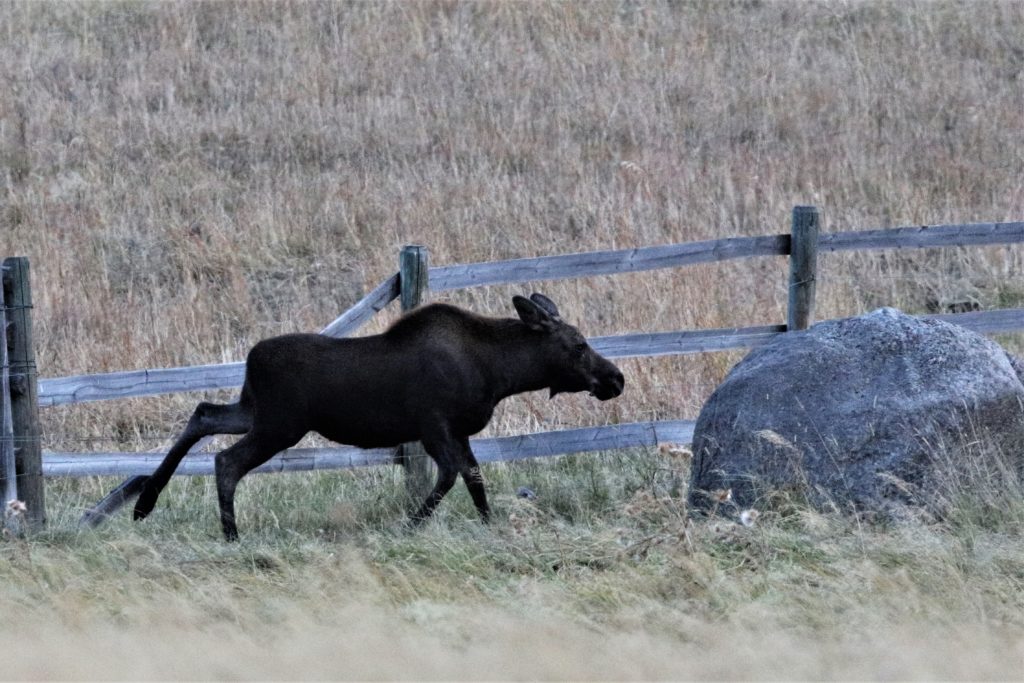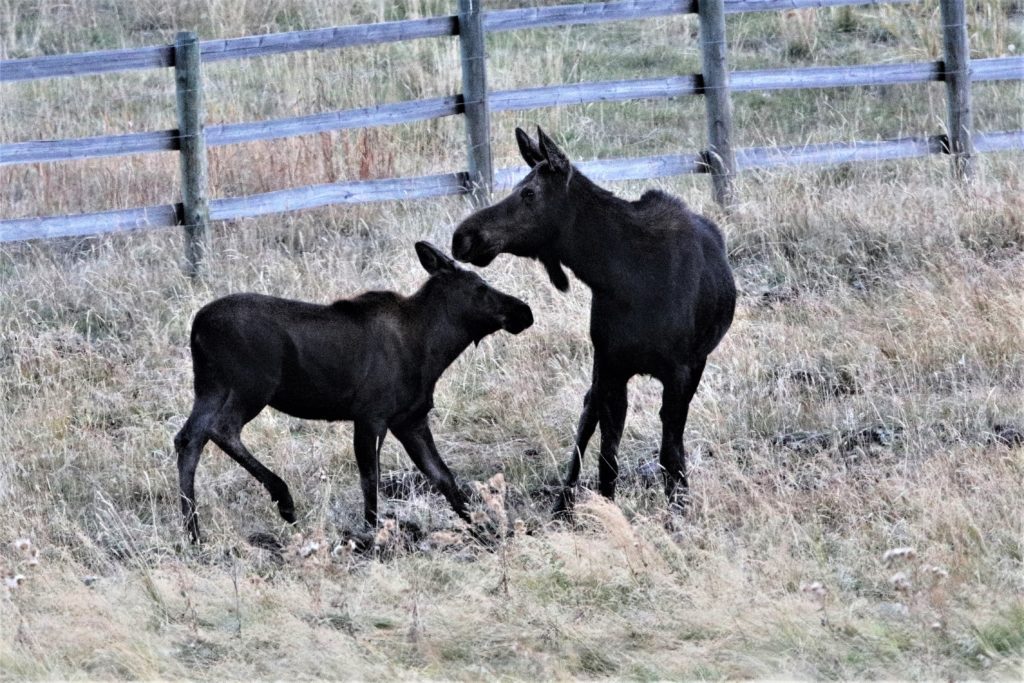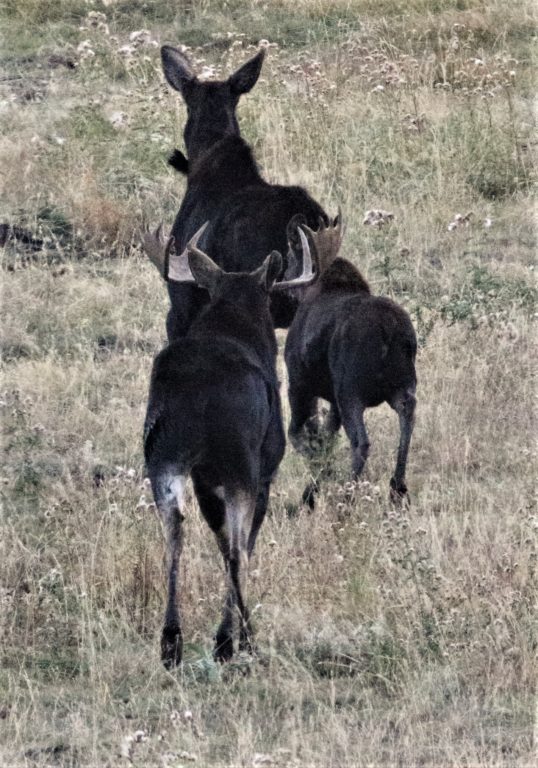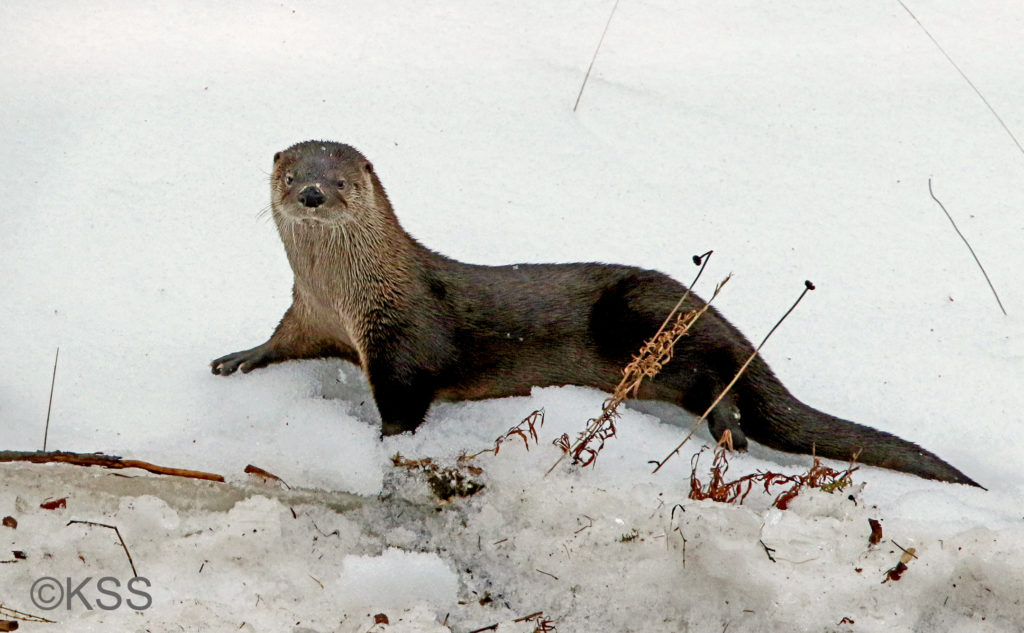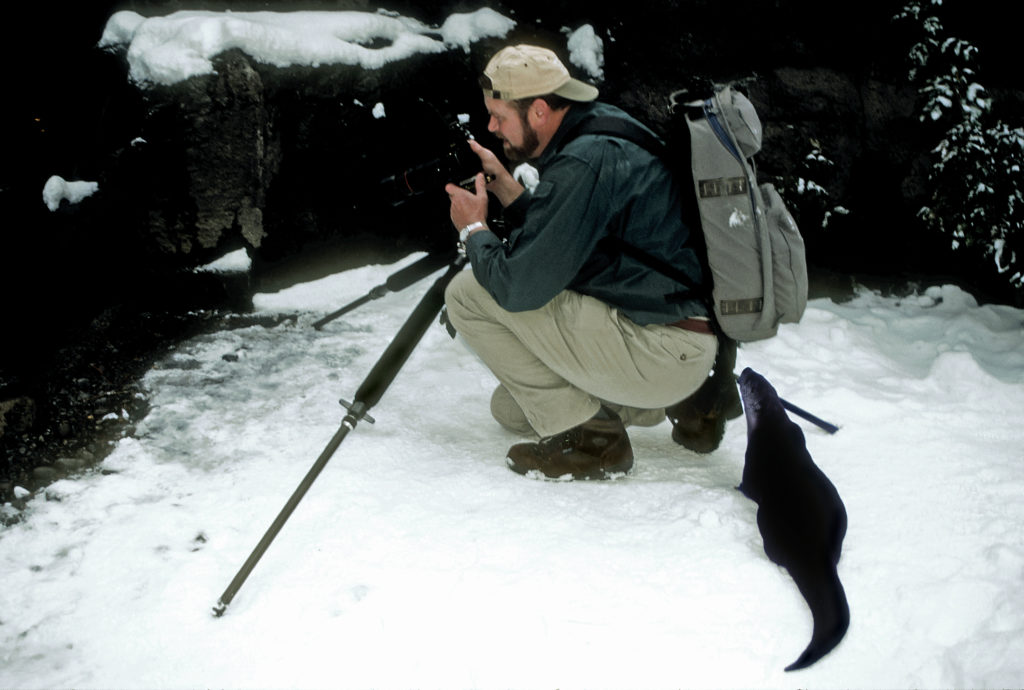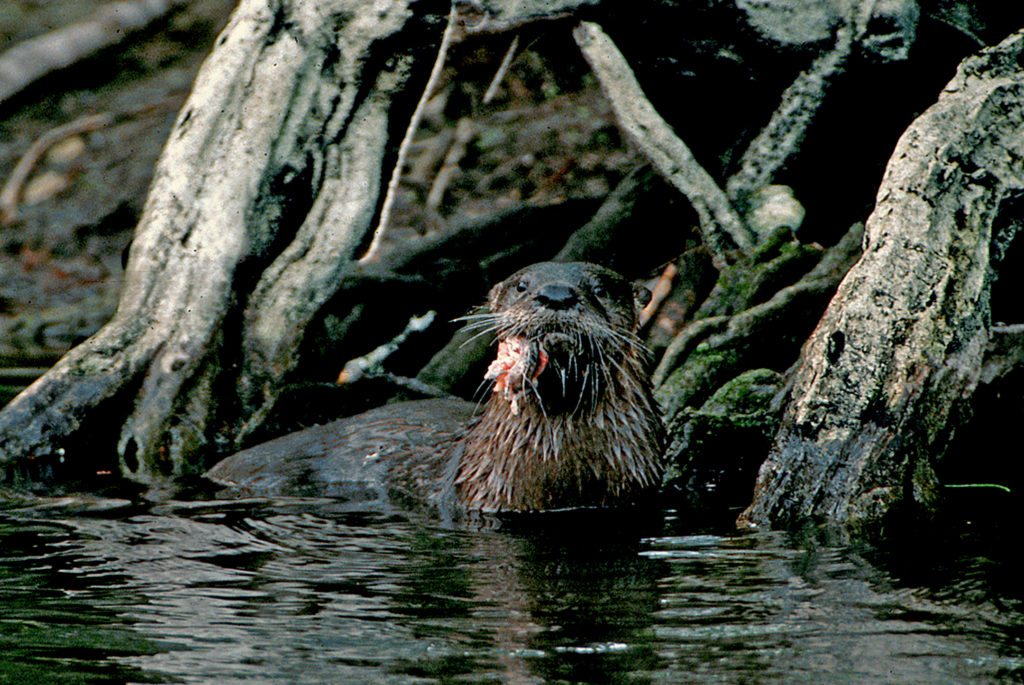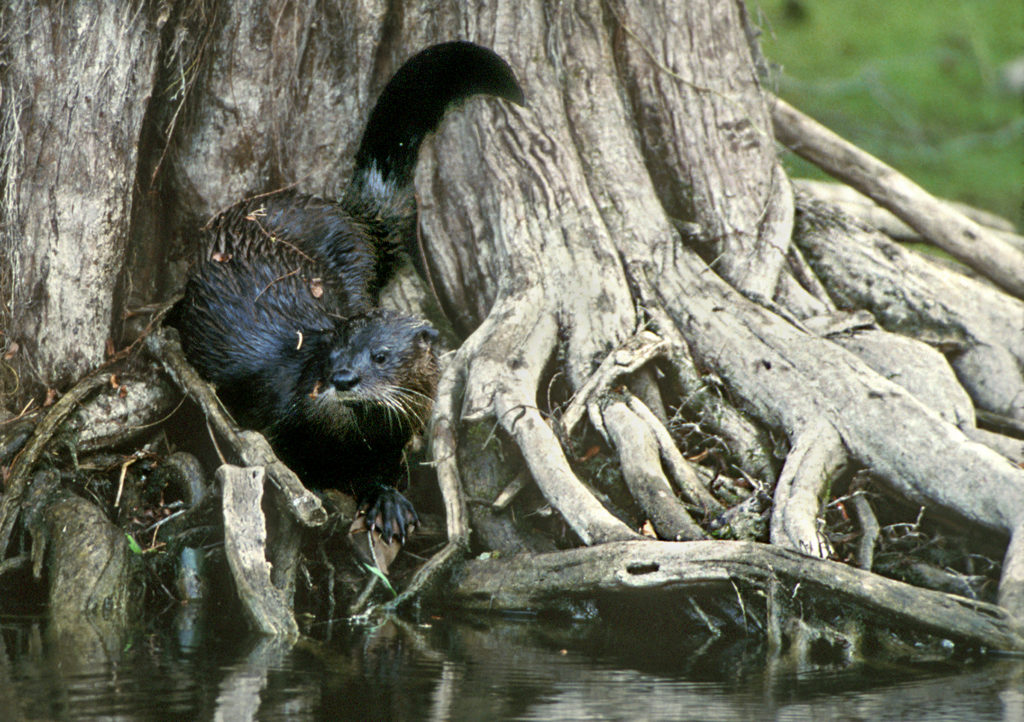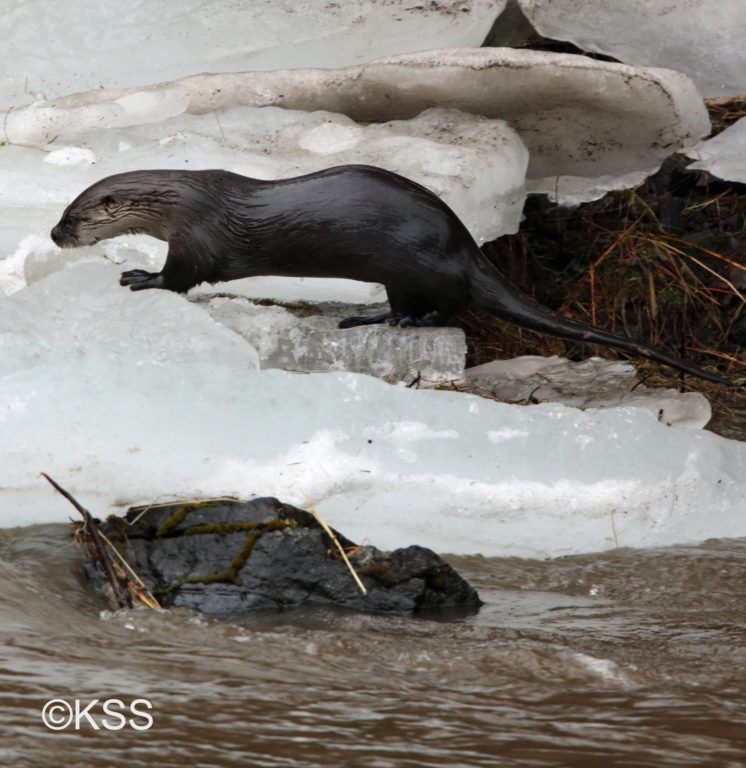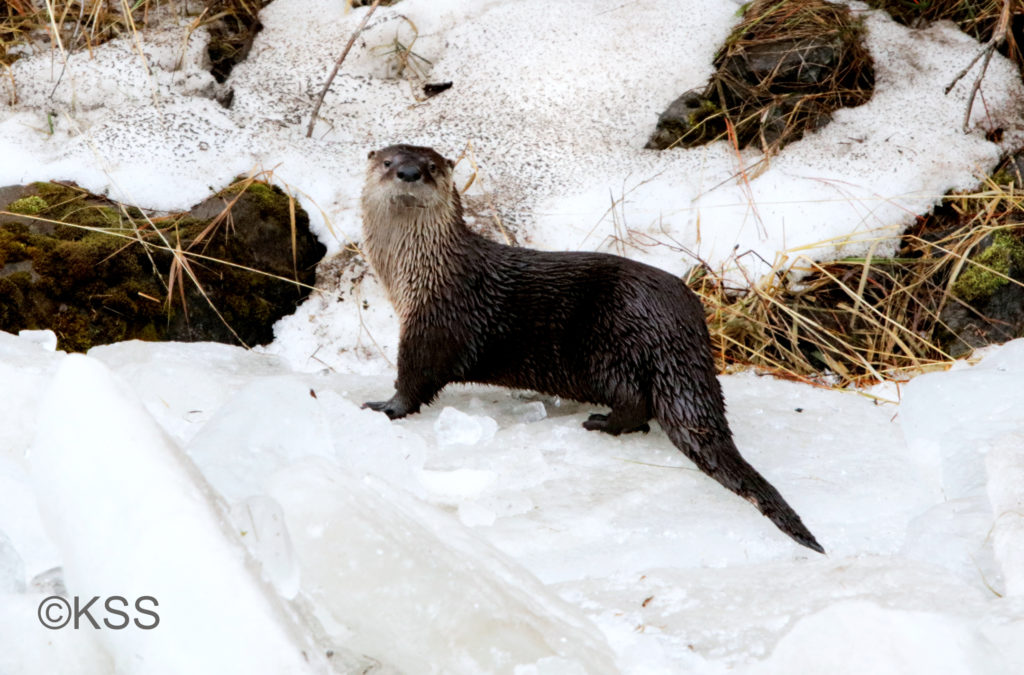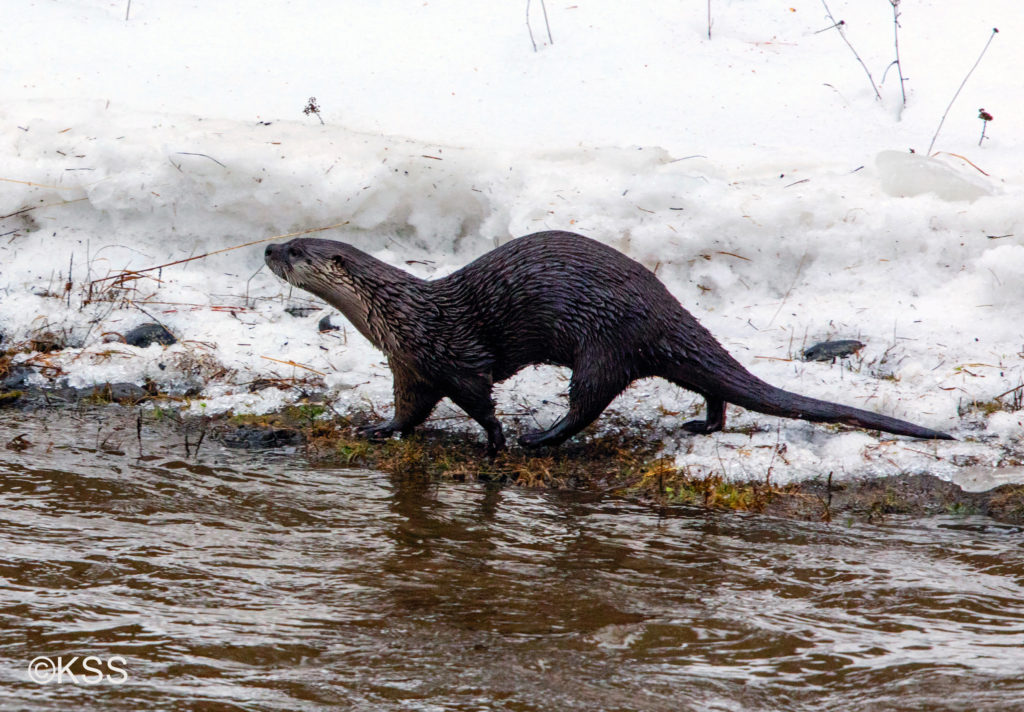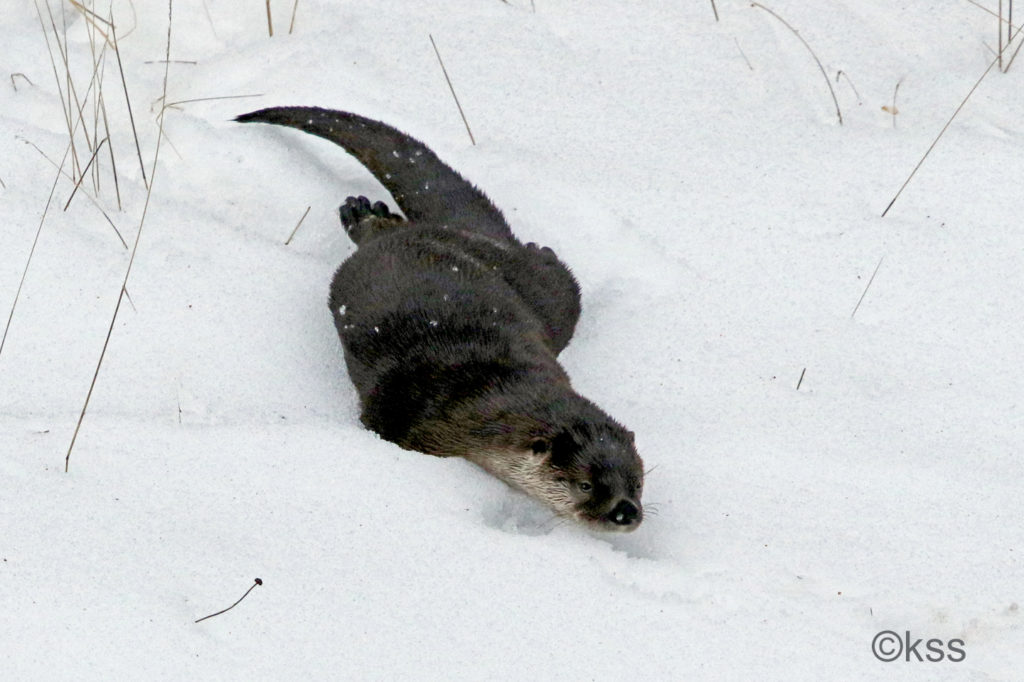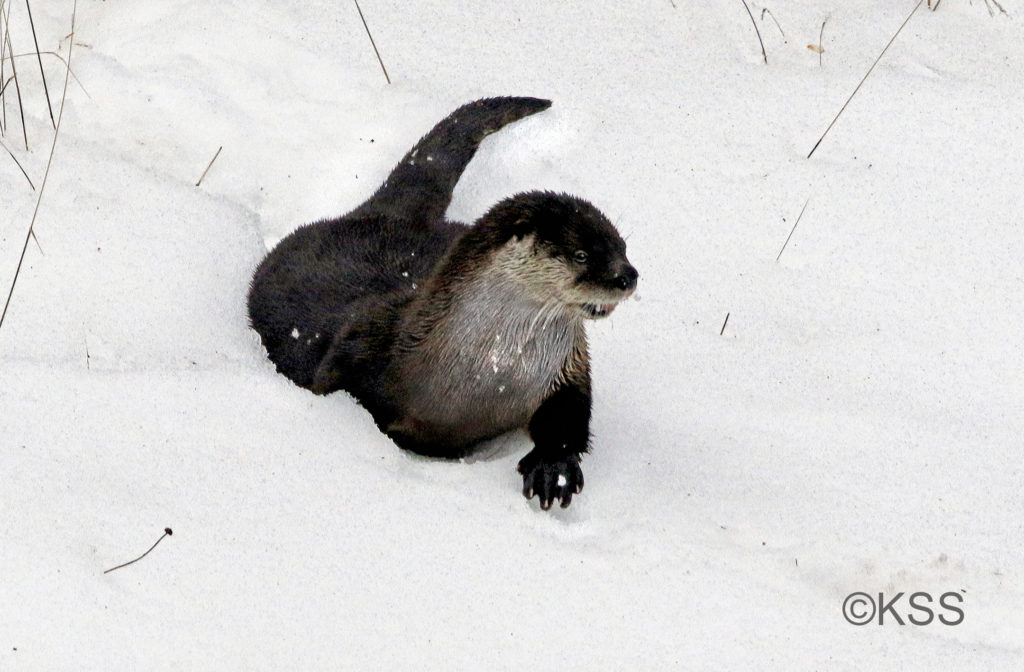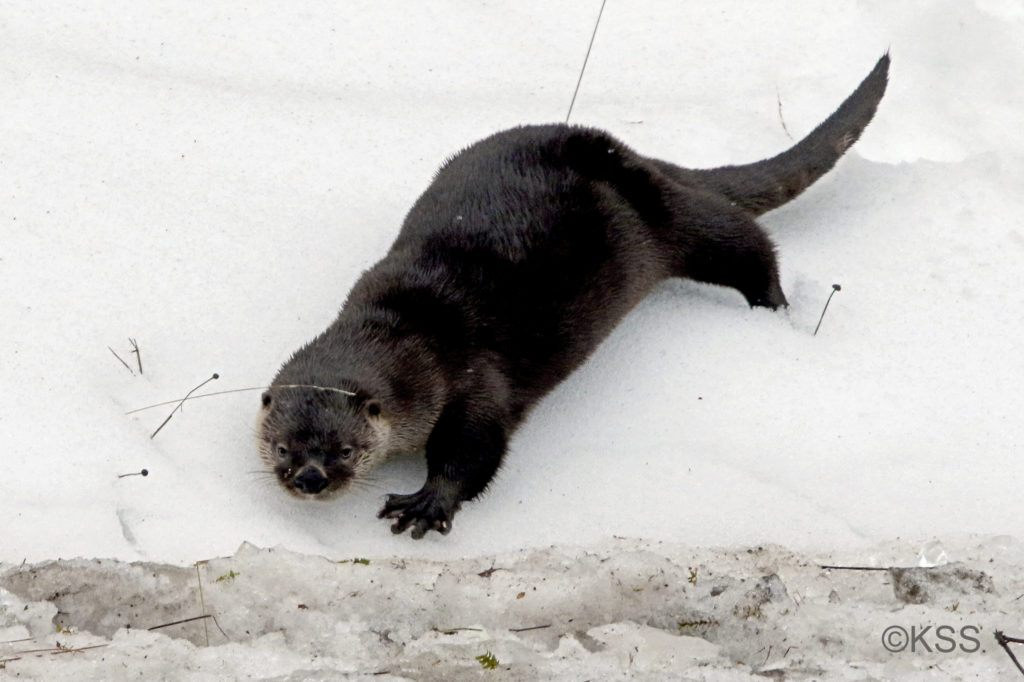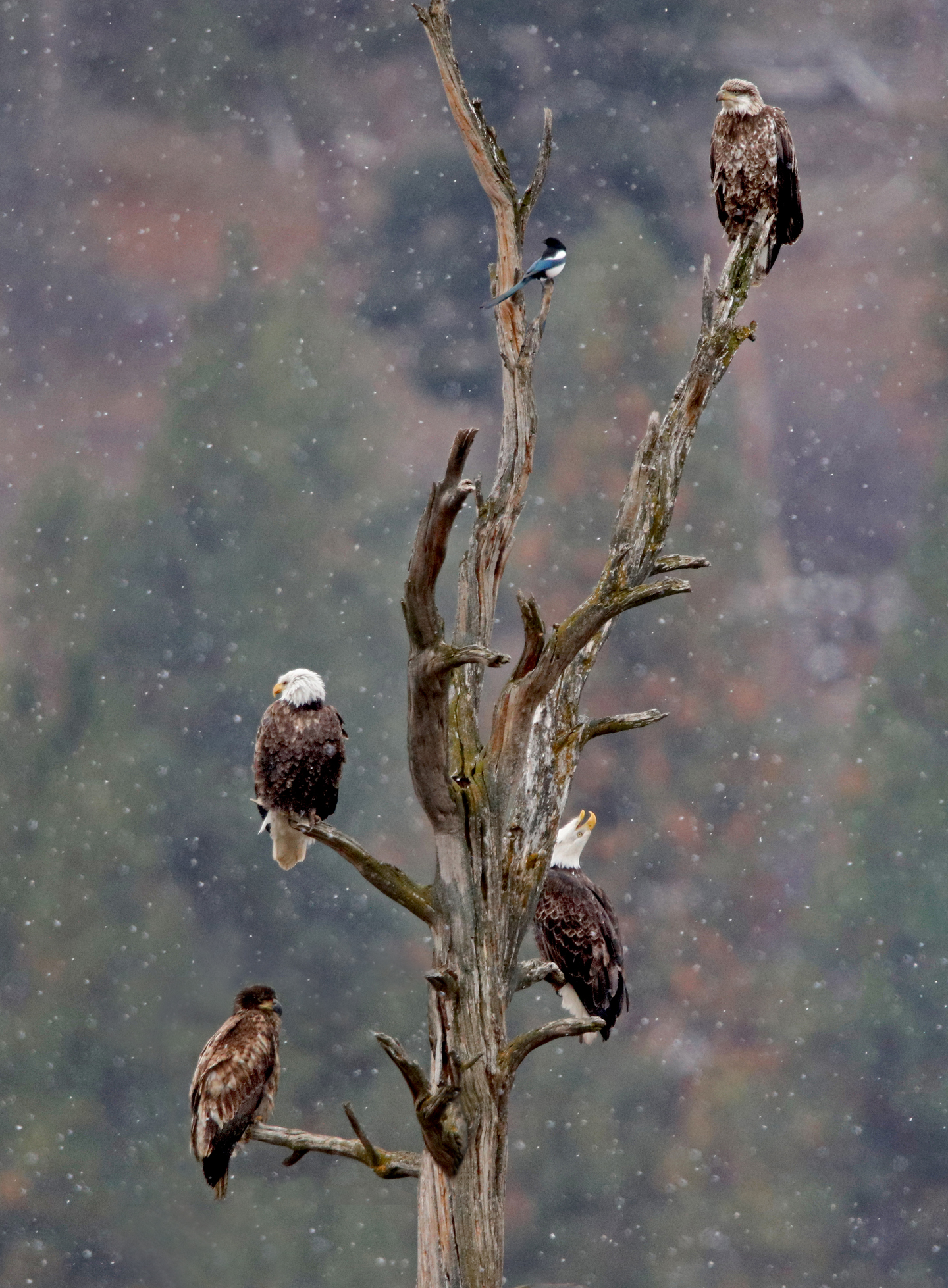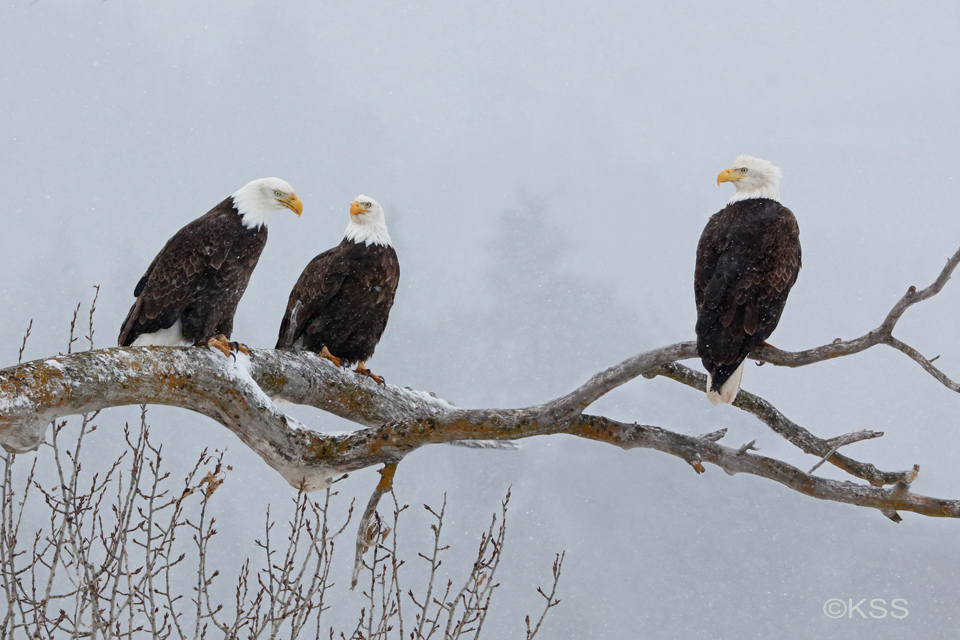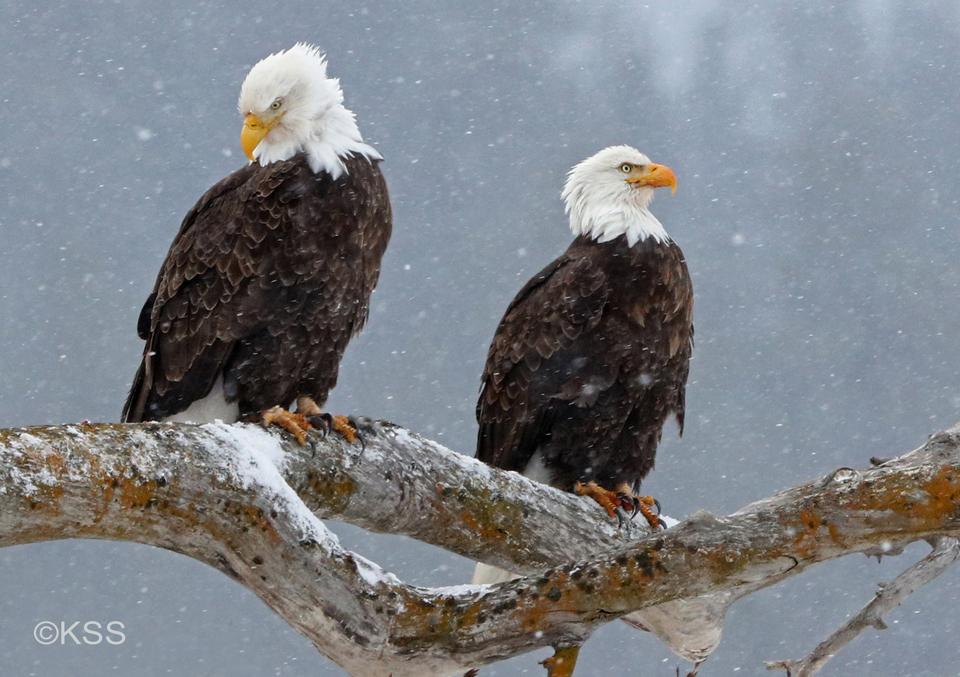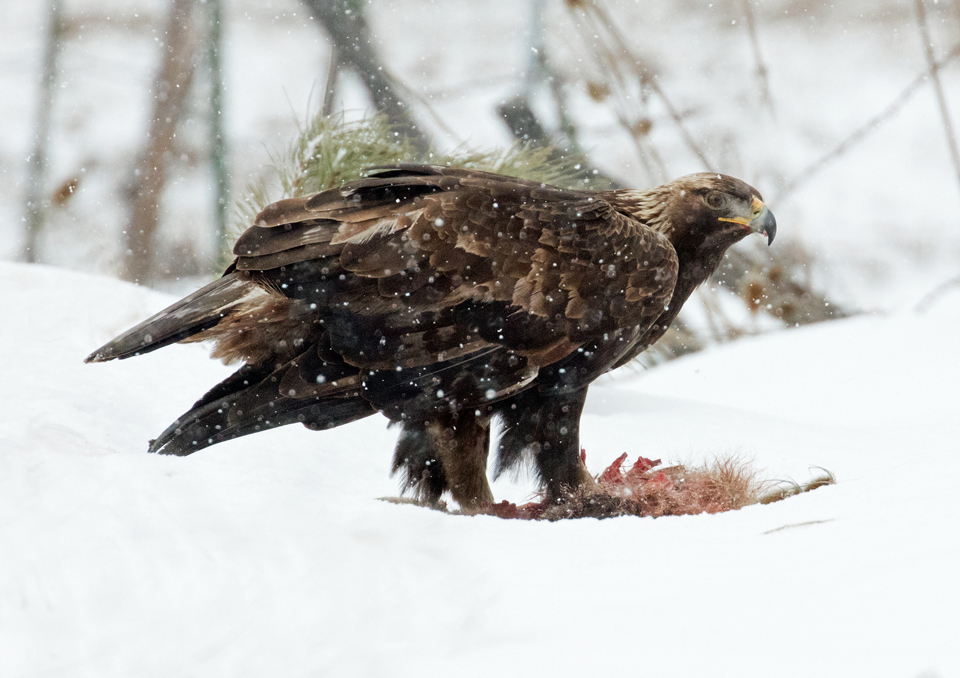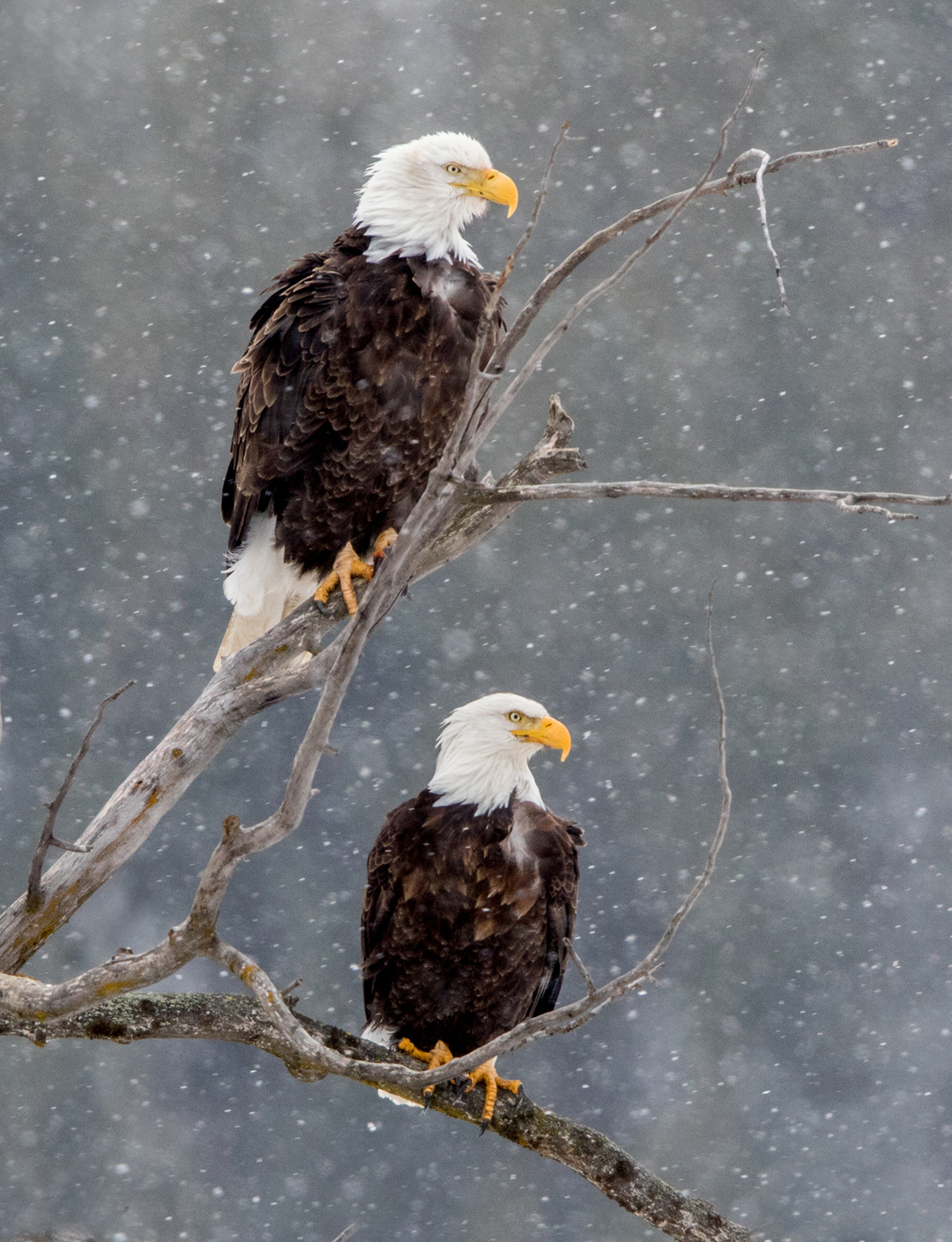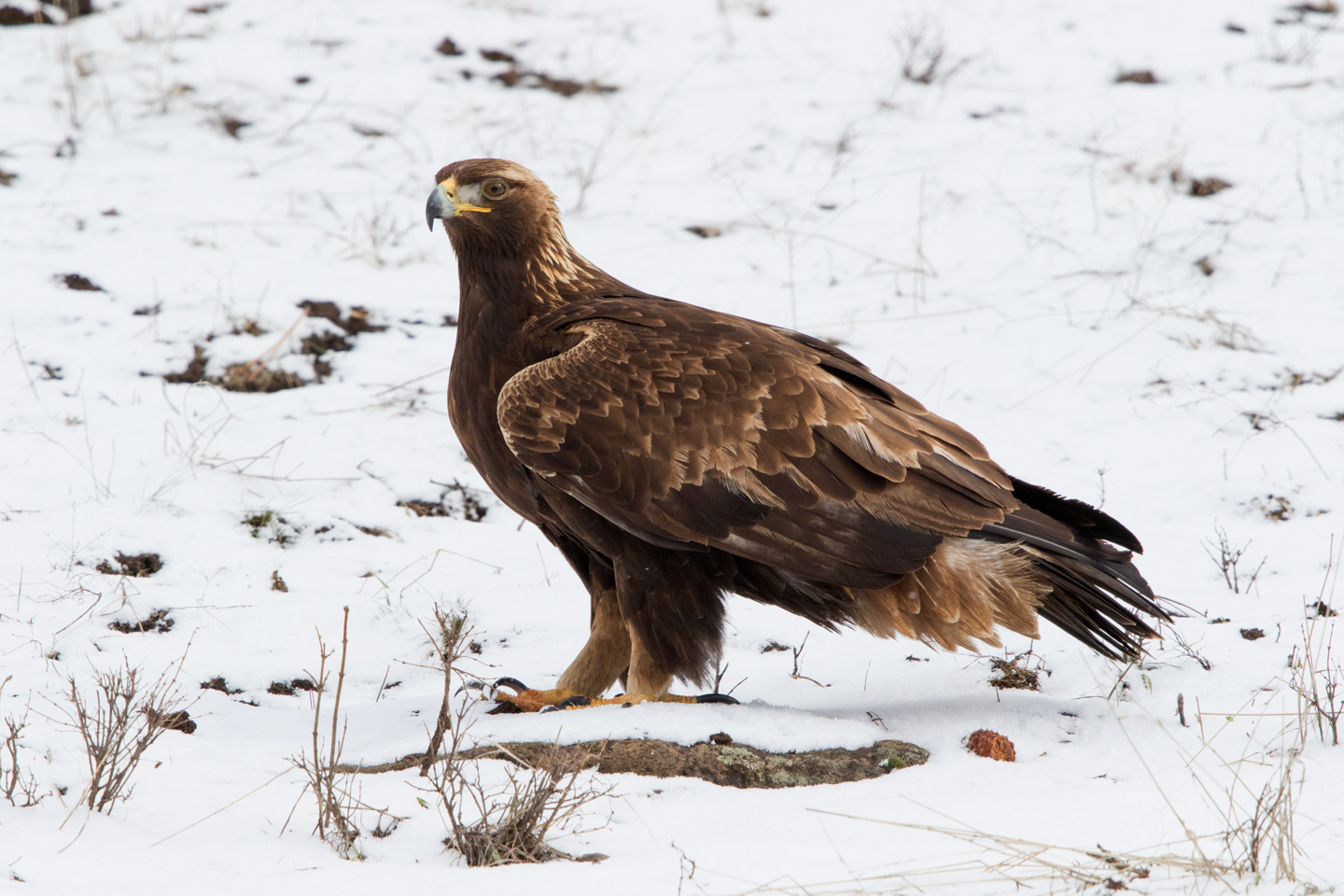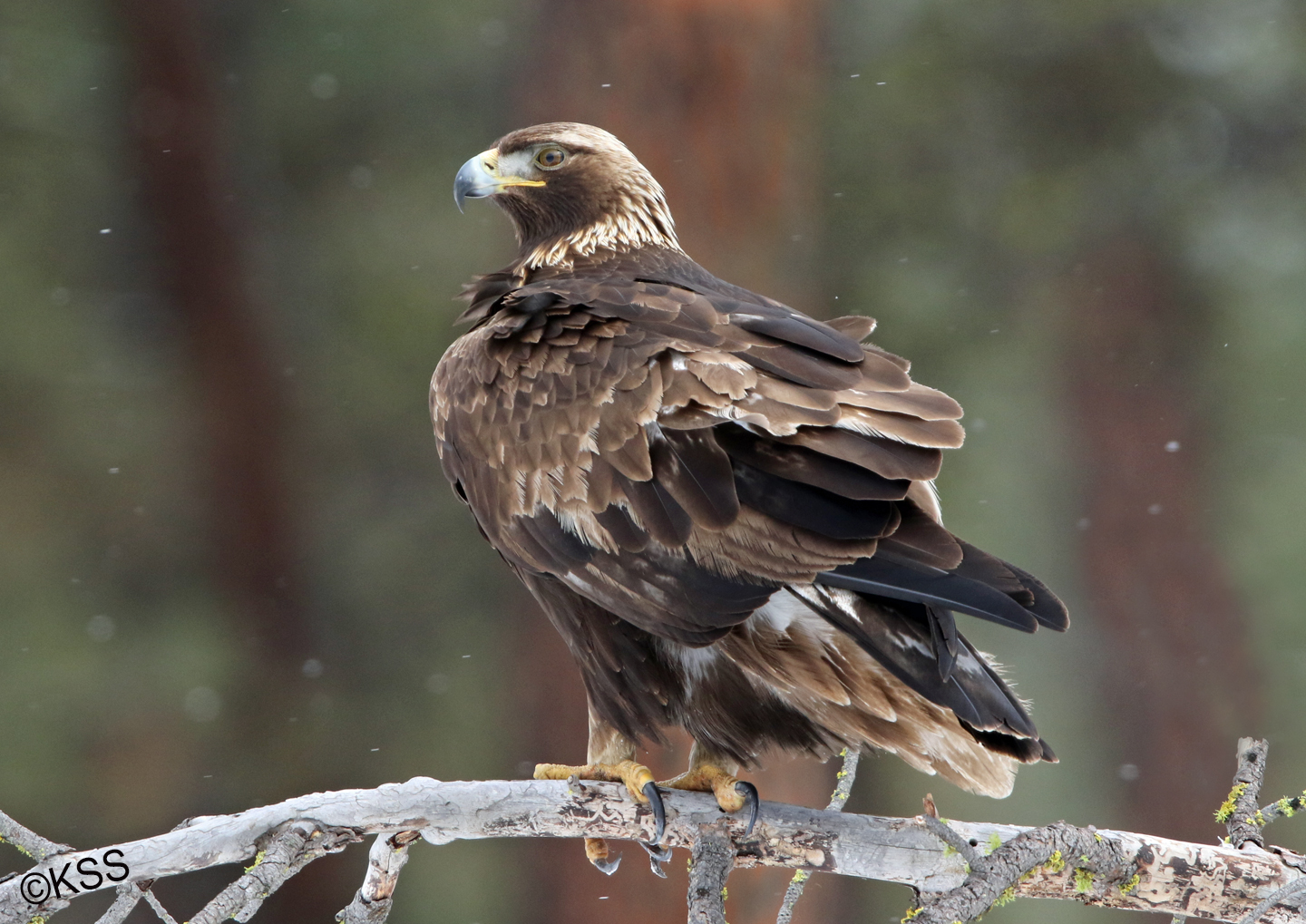Yellowstone – September 17 – Oct 1, 2017
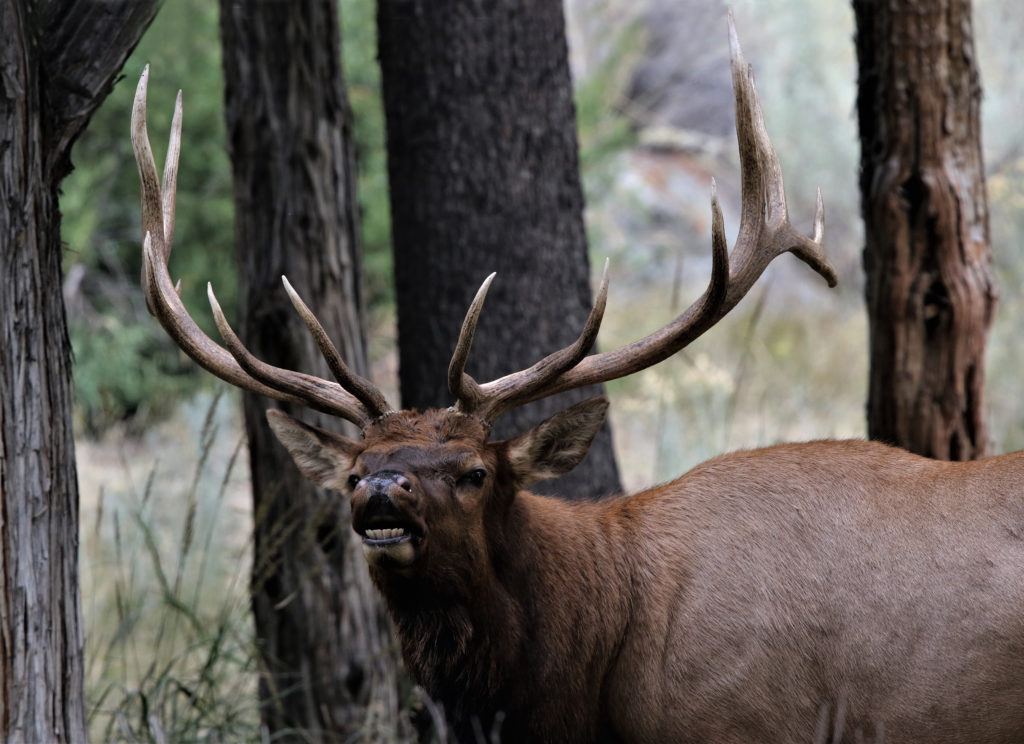
We arrived in Yellowstone National Park on a Sunday evening, September 17th, expecting low tourist attendance, a high percentage of bull elk in the rut and bears in their pre-hibernation feeds. The shock was finding bumper to bumper vehicle traffic moving at rates of speed that made pulling over to spot wildlife subjects impossible. We had not been to the park since 2004. At that time, wildlife photographers were free to scope out opportunities for their shoots without major interference by others. Now, it is impossible, as the park is over-crowded late into the autumn and early in the spring. Between baby-boomers filling campgrounds to capacity in winter-worthy rv/campers and many busloads of Chinese tourists as guests from surrounding towns, it is not possible to become isolated as photographers along the roads of Yellowstone any longer. UPDATE 03/17/2021: REGARDING LARGE NUMBERS OF CHINESE TOURISTS, THESE ARE GUESTS IN OUR COUNTRY AND SHOULD BE TREATED WITH THE SAME RESPECT AS ANY FOREIGN GUESTS. ADDITIONALLY, WE DENOUNCE COWARDLY, IGNORANT WHITE SUPREMACY ABUSE OF AMERICANS OF ASIAN DECENT, OR ANY OTHER-THAN-WHITE AMERICANS. WE ENCOURAGE THE SILENT OBSERVERS OF ABUSE TO DOCUMENT AND REPORT WITNESSED ATROCITIES. THAT’S WHAT REAL PATRIOTS WHO LOVE DEMOCRACY MUST DO.
A wildlife photographer is a magnet for tourists. Pointing a lens at a creature draws dozens of curious onlookers to your elbow asking questions, demanding to know what you are seeing, making it nearly impossible to move and oftentimes, scaring away the photo subject. At times, we felt utter frustration, even anger, for the loss of wonderful photo opportunities. 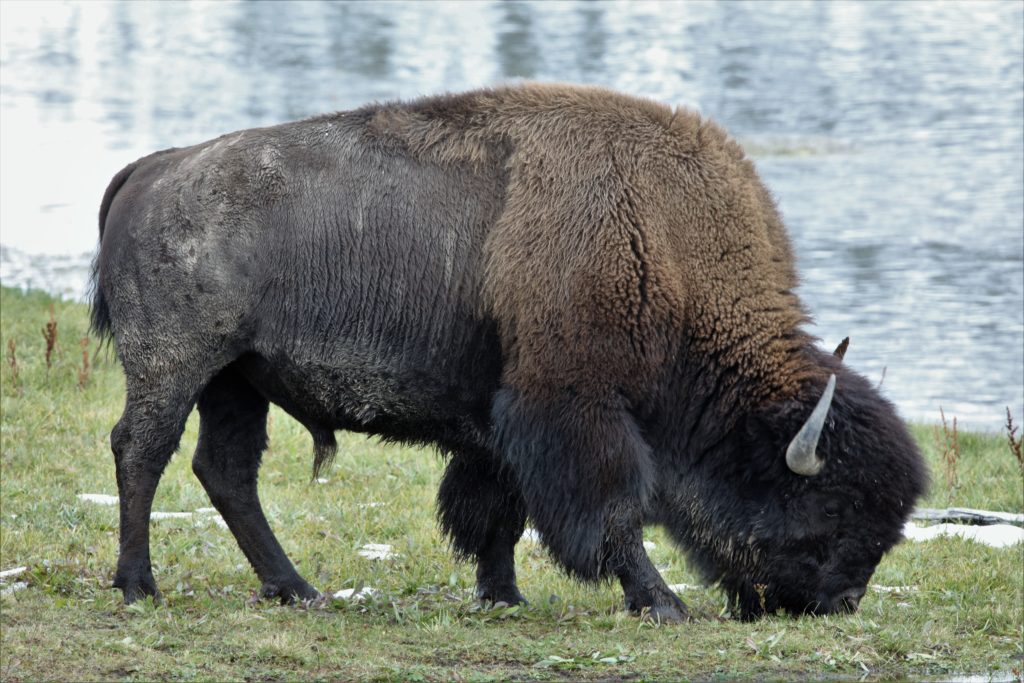
We became determined to make the most of our situation to do wildlife photography. You could photograph bison all day long anywhere in the park. Bison bulls are dangerous when isolated, but herds stream across rivers and roads in good numbers offering anyone opportunities to photograph them.
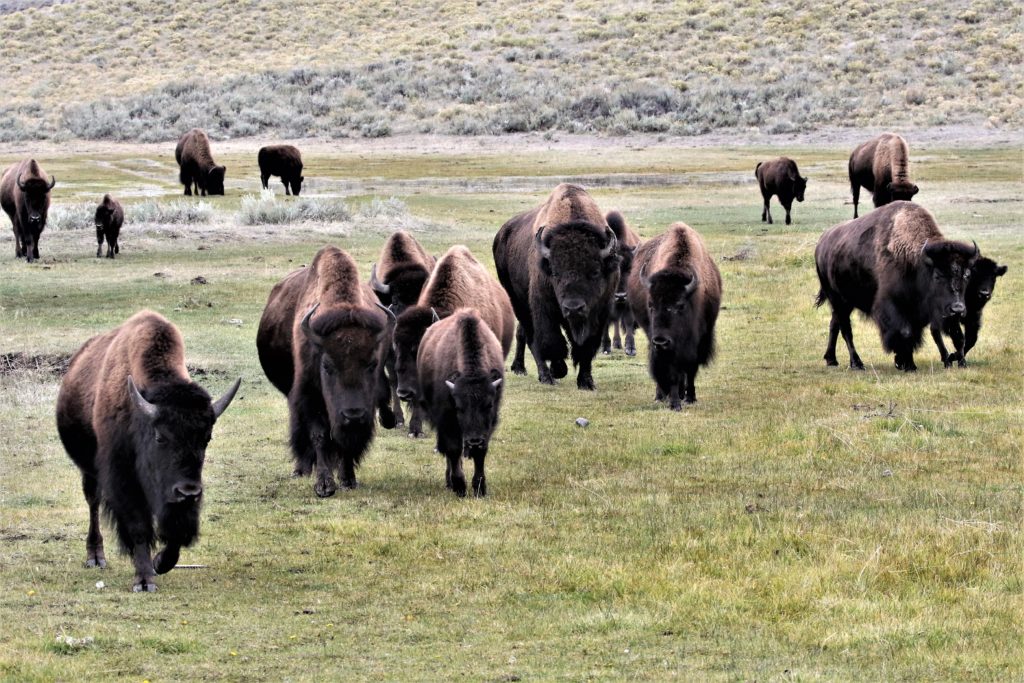
The pronghorns are tolerant of people, if you are careful not to crowd them. 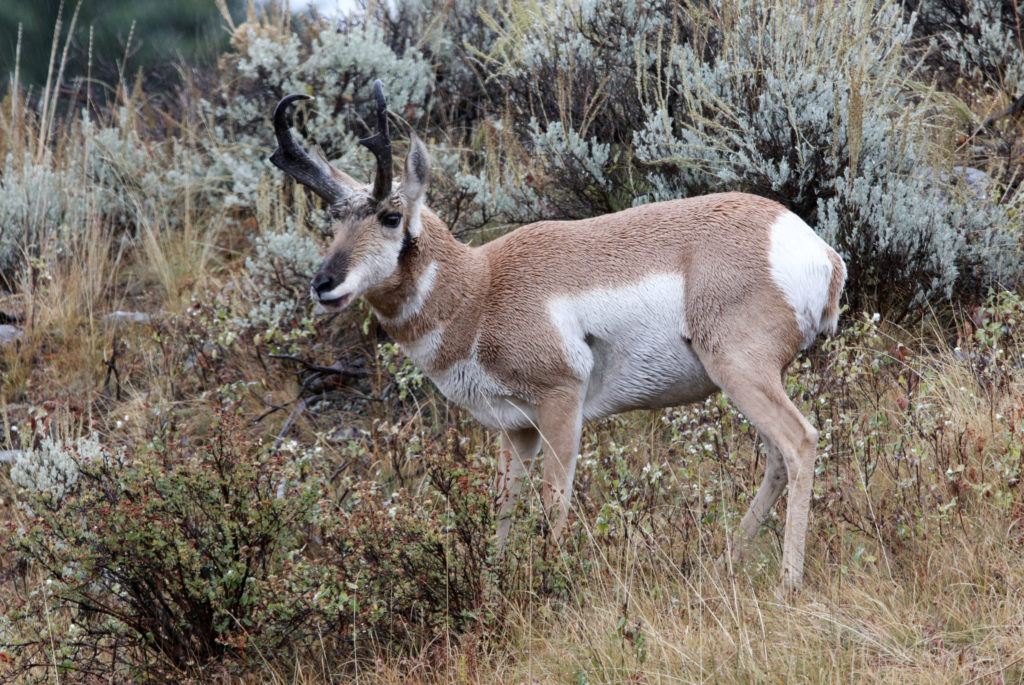
Elk in the rut are predictable to locate. Some are born and raised near human communities, making them photograph-able but also especially dangerous to approach during the rut. Other elk herds frequent prime grazing in valleys or foothills near routes of travel. With persistence, elk photos are going to happen. 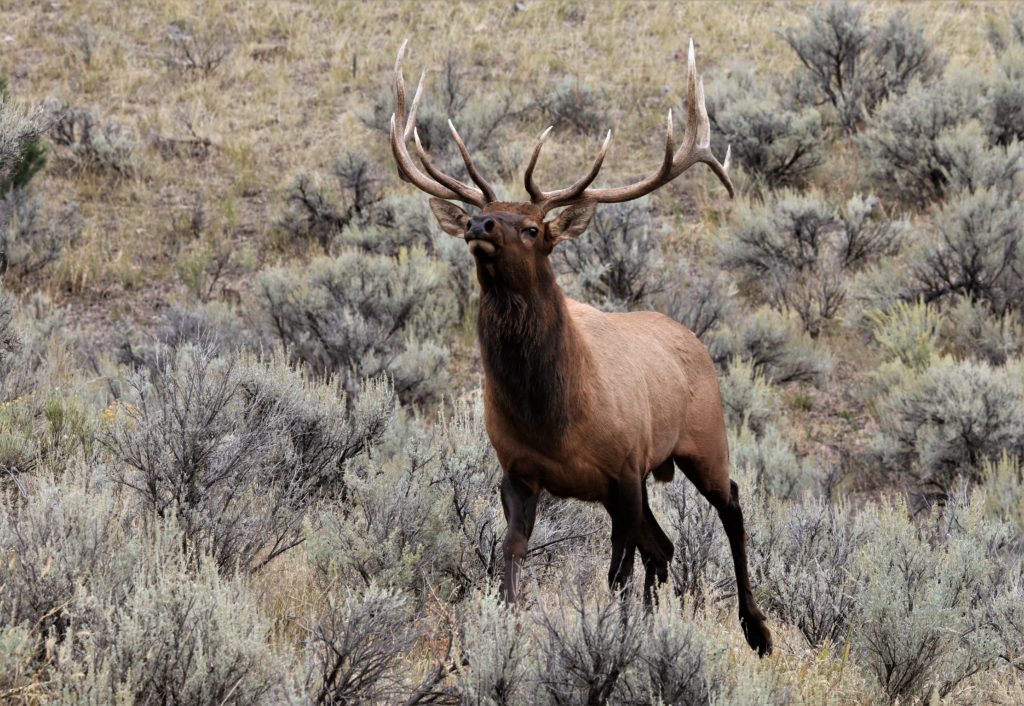
Finding bears to photograph depends on your timing and a little knowledge of their habits. Bears voraciously eat as long as enough food is available to fatten them up for hibernation. During this phase (called hyperphagia) they consume 15,000-20,000 calories per day and need several gallons of liquid to metabolize their food. Berries, nuts, carrion or fresh kills near water are likely places to locate them. Scanning the brush near streams and rivers with berry patches offered the best opportunities. We came upon four sightings of bears that turned into bear jams and made photography very difficult. 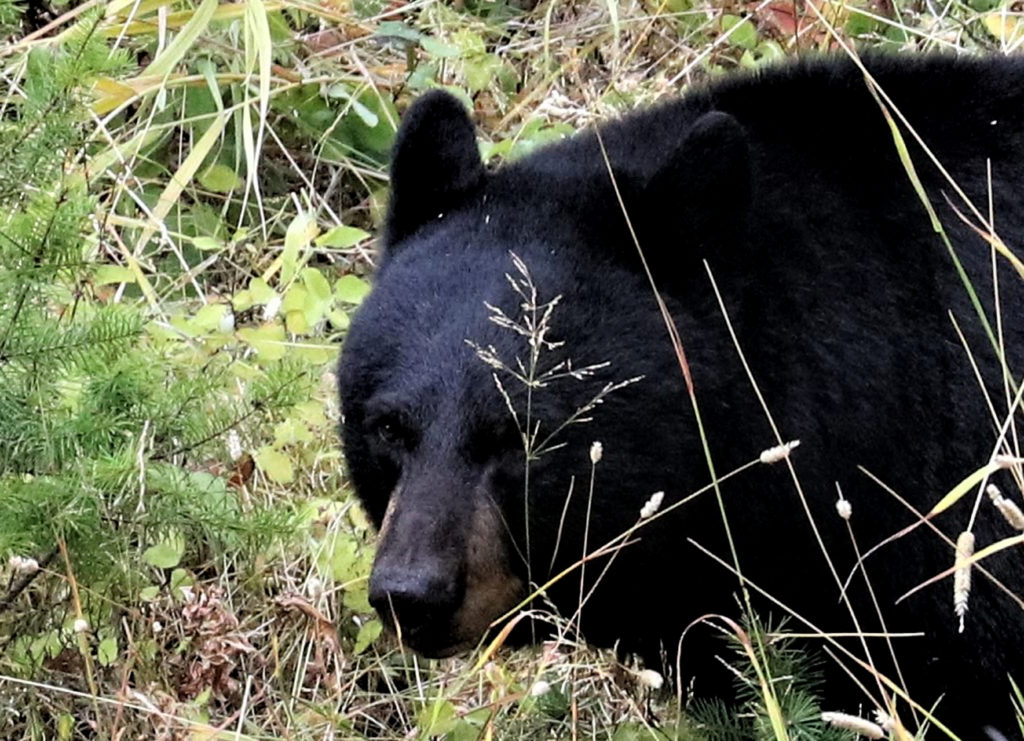
Wolves are not easy to see unless they happen to have made a rare kill near a road. They are very wary of people. Large numbers of tourists dash between high-point observation areas to scan known wolf pack locations with powerful spotting scopes. It seems to please them to spend hours viewing animals that often are more than a mile away – barely being able to determine if a wolf is black or silver. As photographers, we do not consider these sightings as intimate nature experiences worthy of capturing in an image.
Many of the smaller creatures we’d normally photograph in Yellowstone are harder to observe. For one thing, traveling at 20-25 mph is just slow enough to spot smaller subjects, but Yellowstone traffic moves 25-45 mph nowadays. Heavy traffic has apparently pushed many populations further away from the roadways that loop the park. The good news for wildlife is that there are very few roads in Yellowstone, so one assumes many creatures thrive in remote valleys and ridges. Of all the small creatures we sought to photograph, we were most successful at finding the beautiful little cousin to rabbits, the American Pika. Terry’s knowledge of how they create haystacks to store their winter food supplies led us to two denning spots.
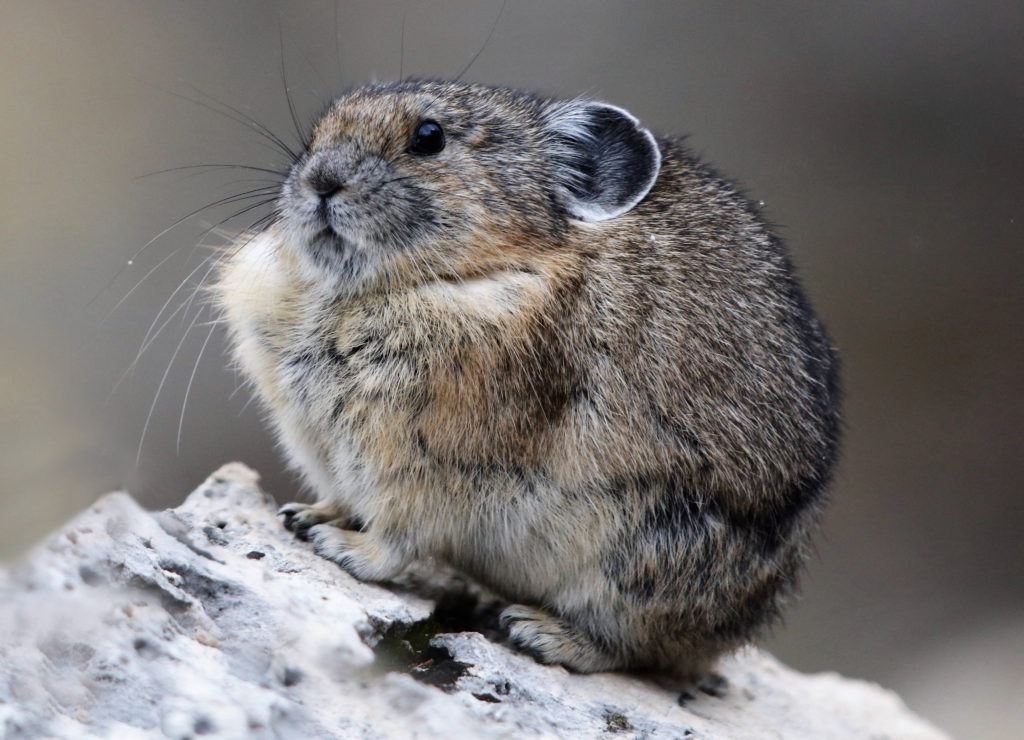
Since wolves were introduced to Yellowstone in the mid-1990’s, they effectively have reduced the coyote population by roughly 50%. Wolves that encounter them will kill them rather than compete with them. The wily Yellowstone coyote has figured out that it is safer to roam nearer to humans, distant from where wolves hang out. We could observe them going about their natural hunting behaviors within range of our telephoto lenses. It is quite the opposite in Grant County, Oregon where coyotes are hunted as vermin. Here, the sight of a slowing vehicle causes a very different response – they will bound away from the roadway as fast as possible.
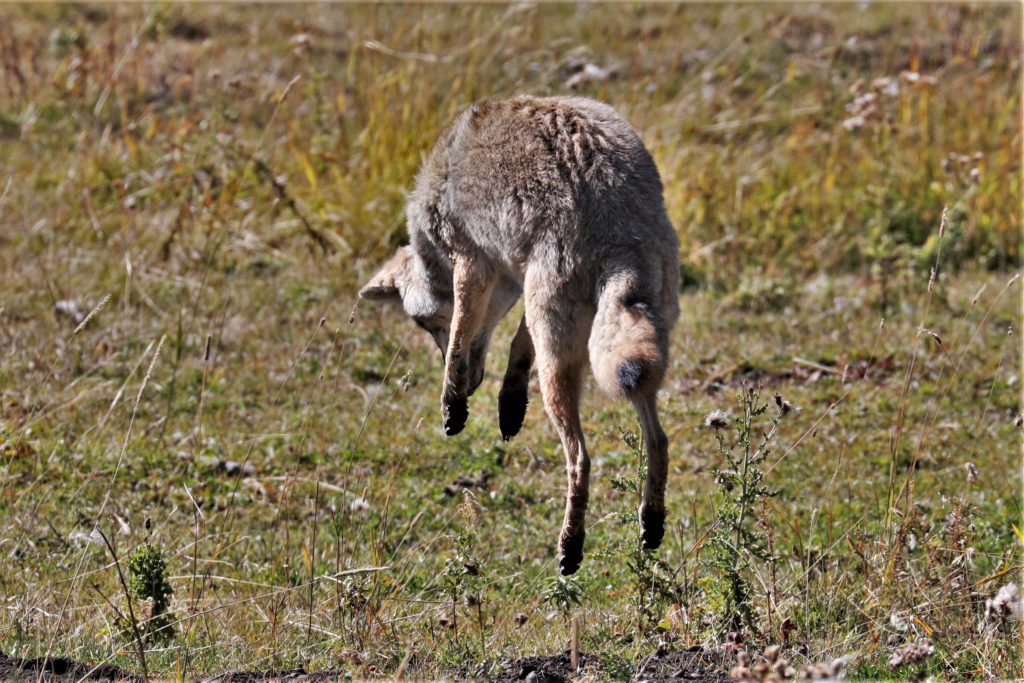
For those who seek beautiful views of some dramatic landscape, Yellowstone will not disappoint them. Artist Point with a view of Lower Falls is breathtaking, as are several waterfalls within the park. Yellowstone Lake is huge with a backdrop of snow-peaked mountains. The scorched countryside from the big fires of 1988 are filling with reproduction forests. The hot springs and geysers add wonder, mystery and a sense of risk about what all lies just below the surface in Yellowstone. We may never return to Yellowstone to do wildlife photography; but still, wildlife does abound there, and we were successful in capturing more images within two weeks than all winter in our home area where creatures are hunted and avoid our approach. To view our slideshow click this link: https://terrysteelenaturephotography.com/yellowstone-national-park-2017/
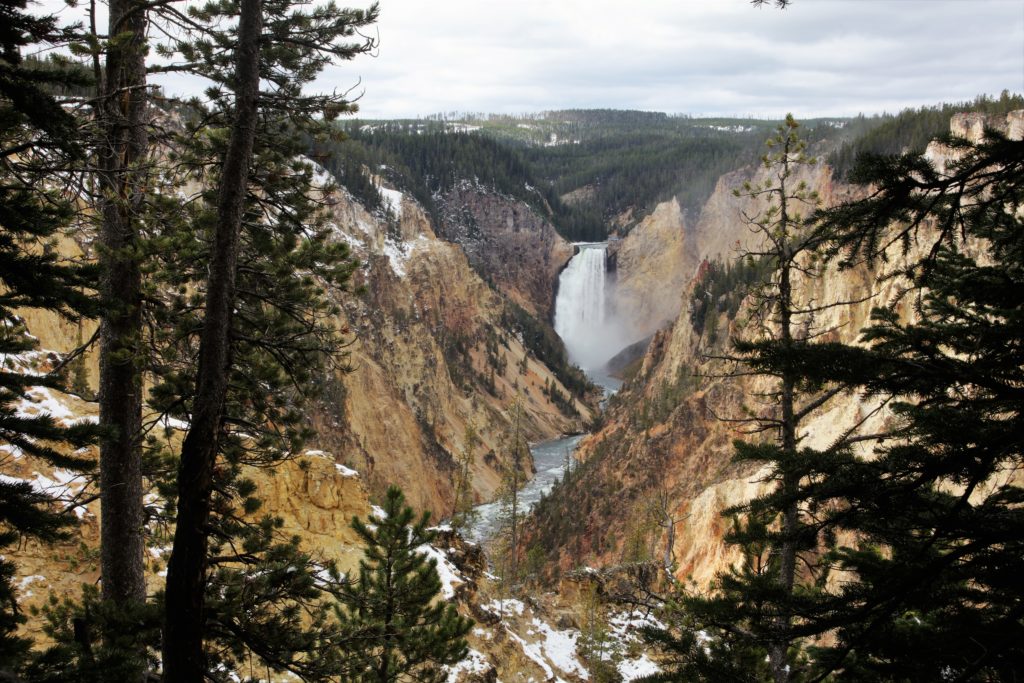
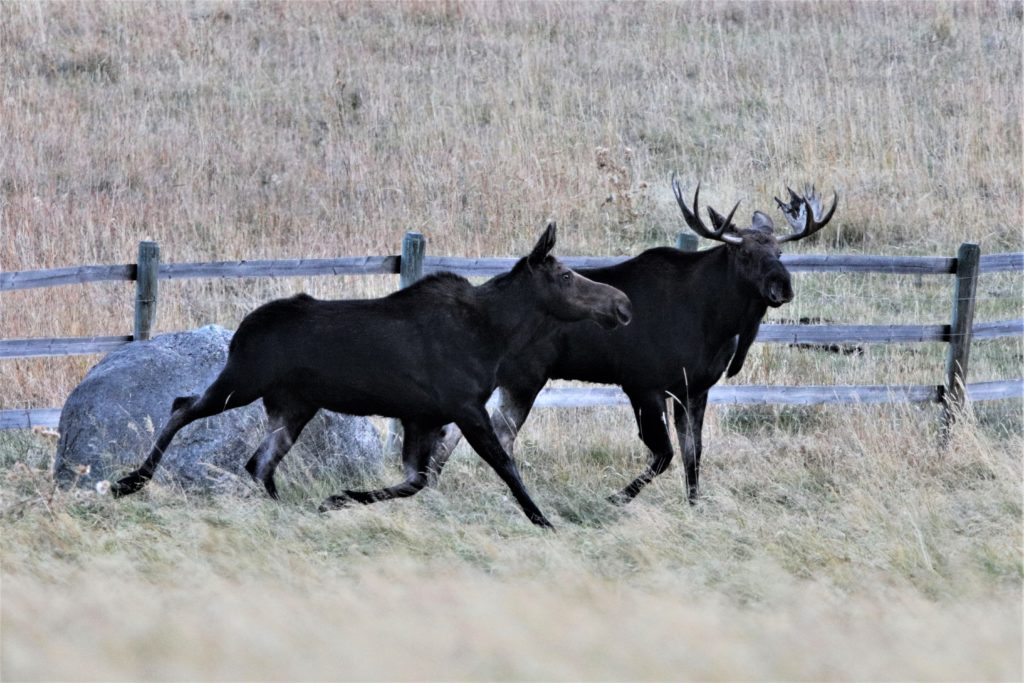 A Shiras bull moose in the rut was pursuing a cow moose in heat. She trotted away from the fence for several hundred feet and stopped. As he caught up to her, she darted back to the fence again. He pursued. She seemed anxious, stressed.
A Shiras bull moose in the rut was pursuing a cow moose in heat. She trotted away from the fence for several hundred feet and stopped. As he caught up to her, she darted back to the fence again. He pursued. She seemed anxious, stressed. 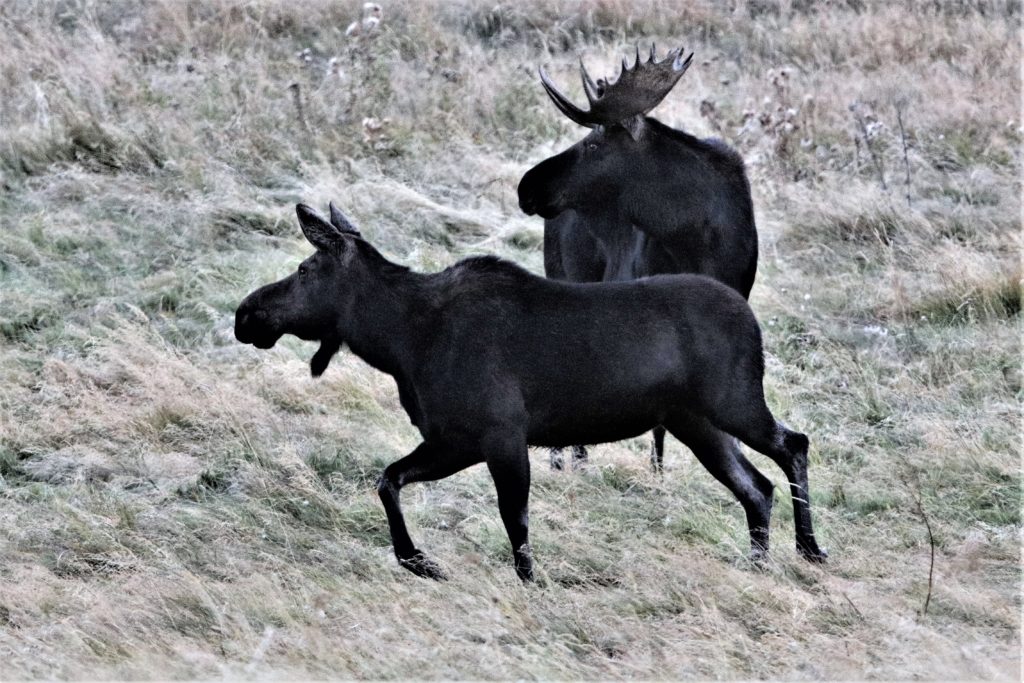 Then we discovered the reason, a moose calf was stuck inside the fence, unable to clear the top or work through the barbed wire strung between a barrier of boards. If ever we had a chance to read an animal’s mind, this was it – then and there. The bull had one thing on its mind, the cow had her youngster on her mind. Momma was beckoning the calf to leap the fence.
Then we discovered the reason, a moose calf was stuck inside the fence, unable to clear the top or work through the barbed wire strung between a barrier of boards. If ever we had a chance to read an animal’s mind, this was it – then and there. The bull had one thing on its mind, the cow had her youngster on her mind. Momma was beckoning the calf to leap the fence.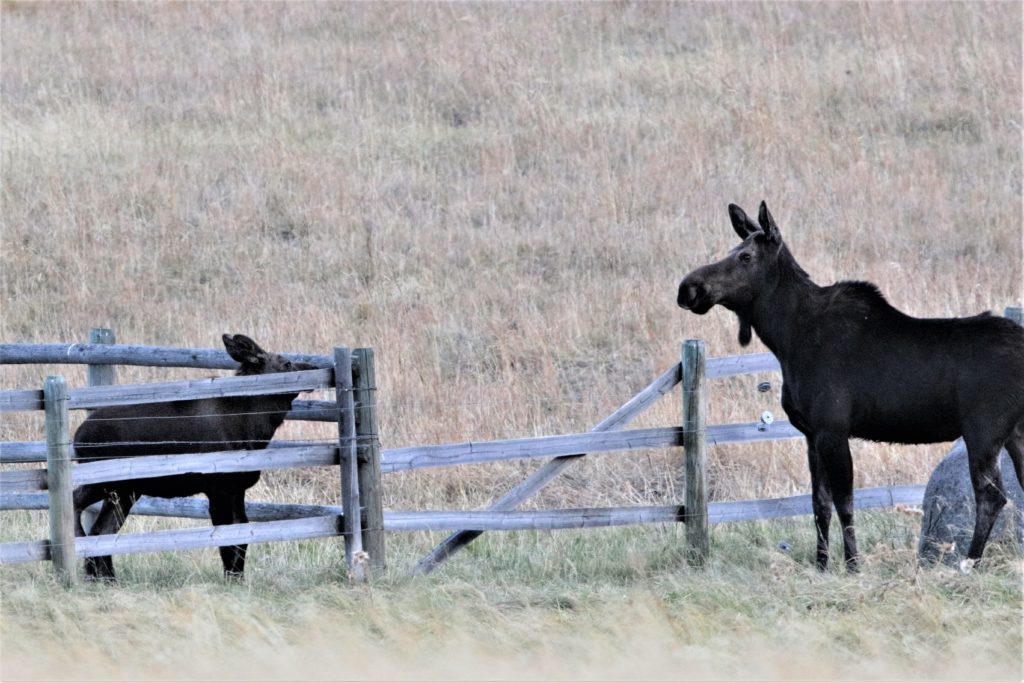 She approached it as closely as possible, stretched her neck over the fence top, then turned and bolted away from the calf for more than a hundred feet. Over and over she repeated this action. Each time the bull followed her.
She approached it as closely as possible, stretched her neck over the fence top, then turned and bolted away from the calf for more than a hundred feet. Over and over she repeated this action. Each time the bull followed her.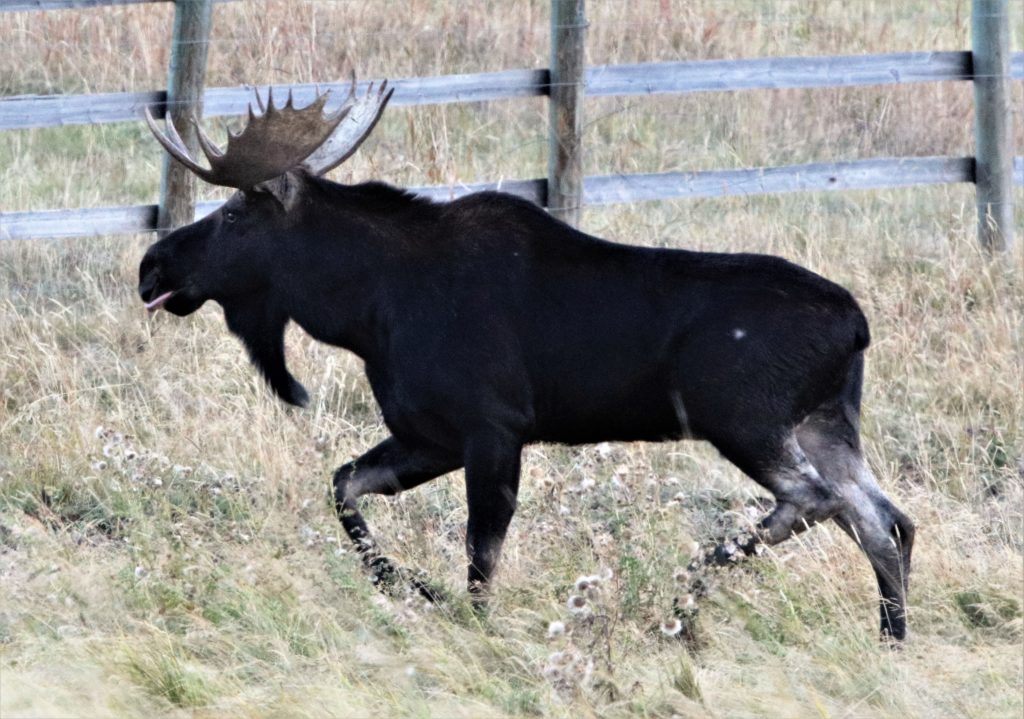
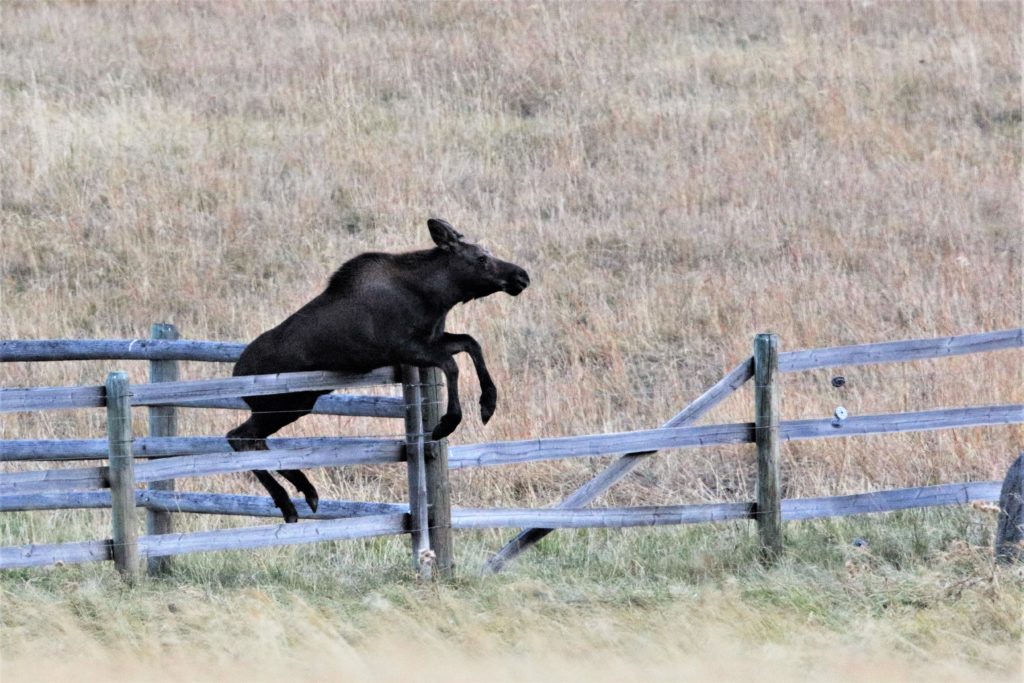 It was a hard escape. The young moose managed to thrust its center of gravity over the top, but its hind end scrambled hard to climb the fence boards and wire. First one foot shook loose the barbed wire, but the other foot seemed badly snagged. We held our breaths, very concerned the calf was hopelessly tangled. After a worrisome period of time, the other foot was freed. What a relief. We would not have been able to help it without risking an attack by its mother.
It was a hard escape. The young moose managed to thrust its center of gravity over the top, but its hind end scrambled hard to climb the fence boards and wire. First one foot shook loose the barbed wire, but the other foot seemed badly snagged. We held our breaths, very concerned the calf was hopelessly tangled. After a worrisome period of time, the other foot was freed. What a relief. We would not have been able to help it without risking an attack by its mother. 